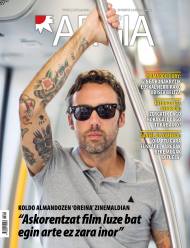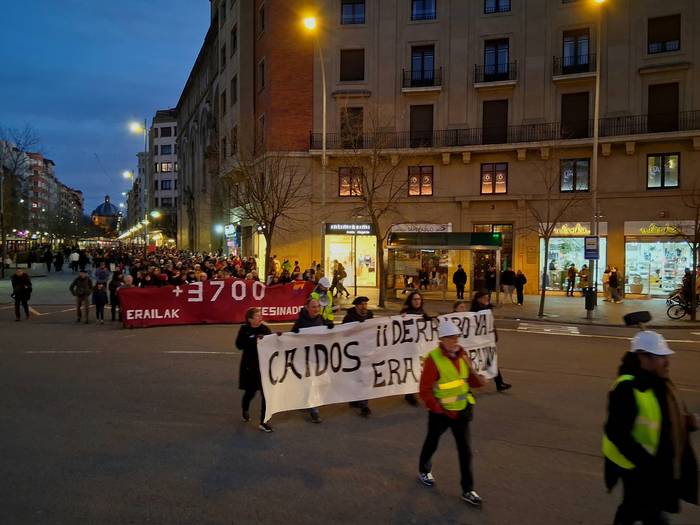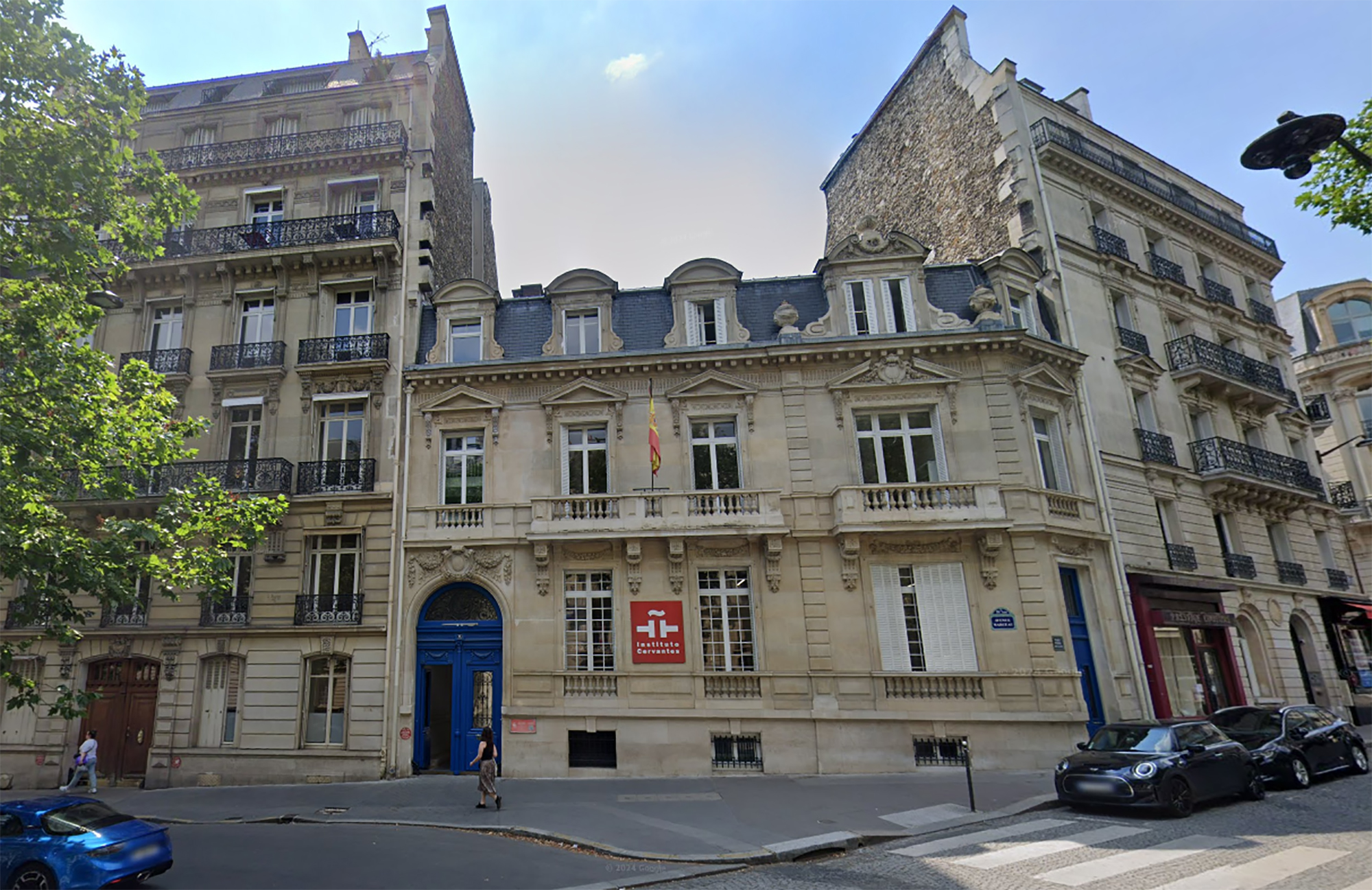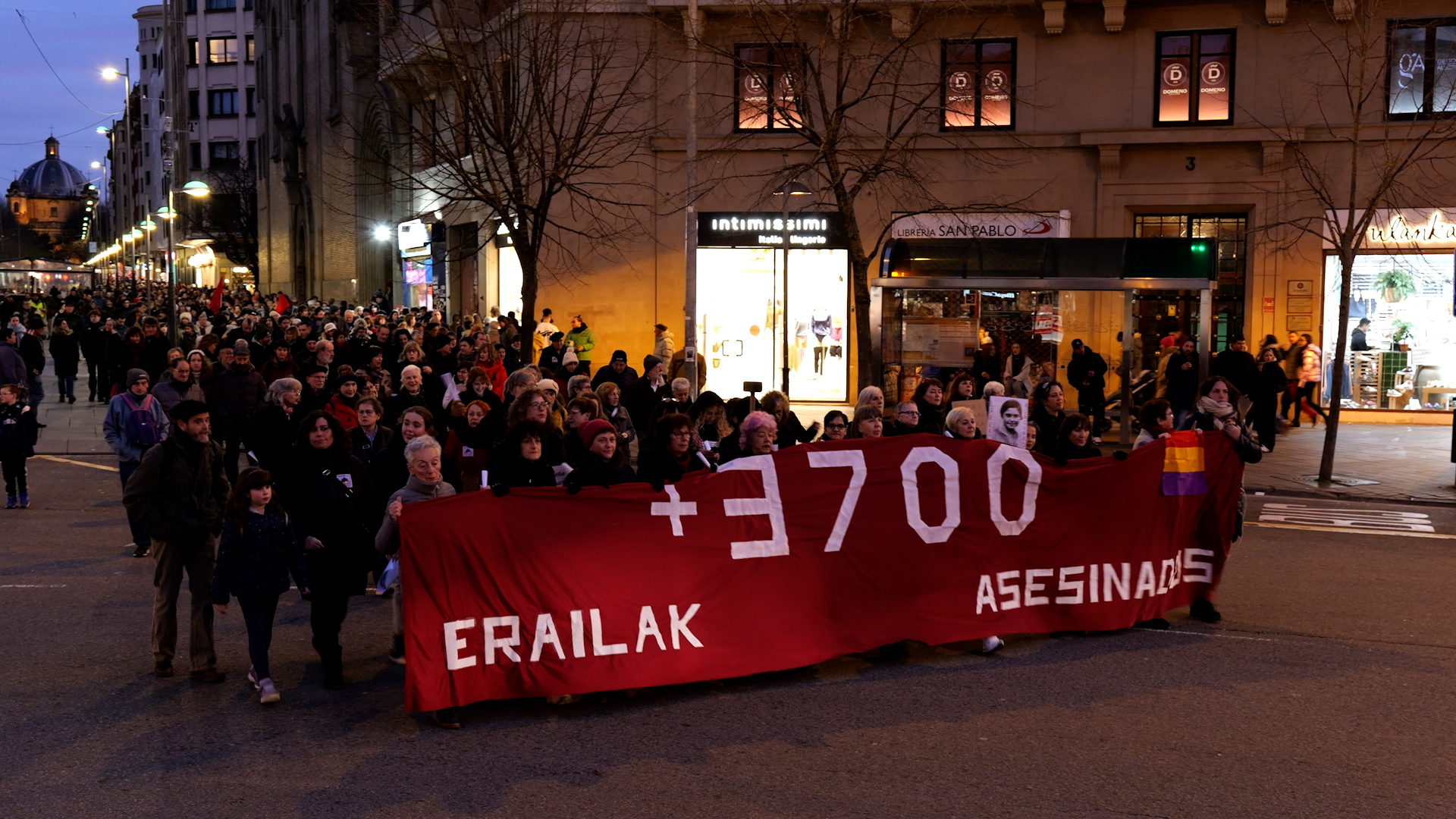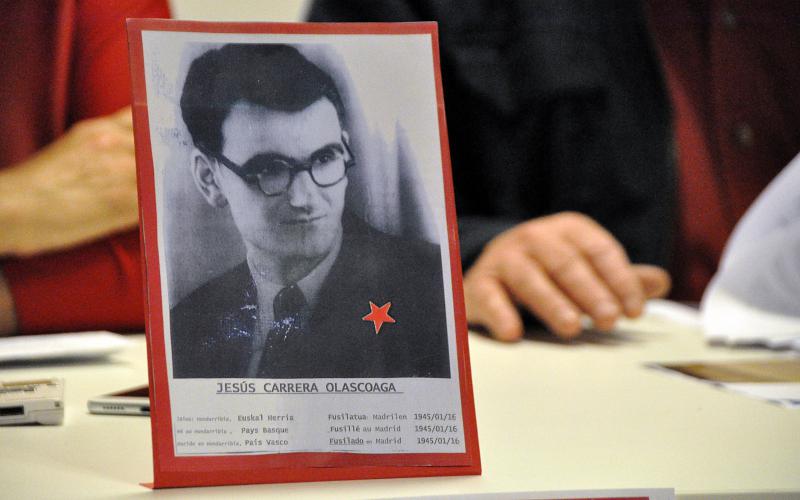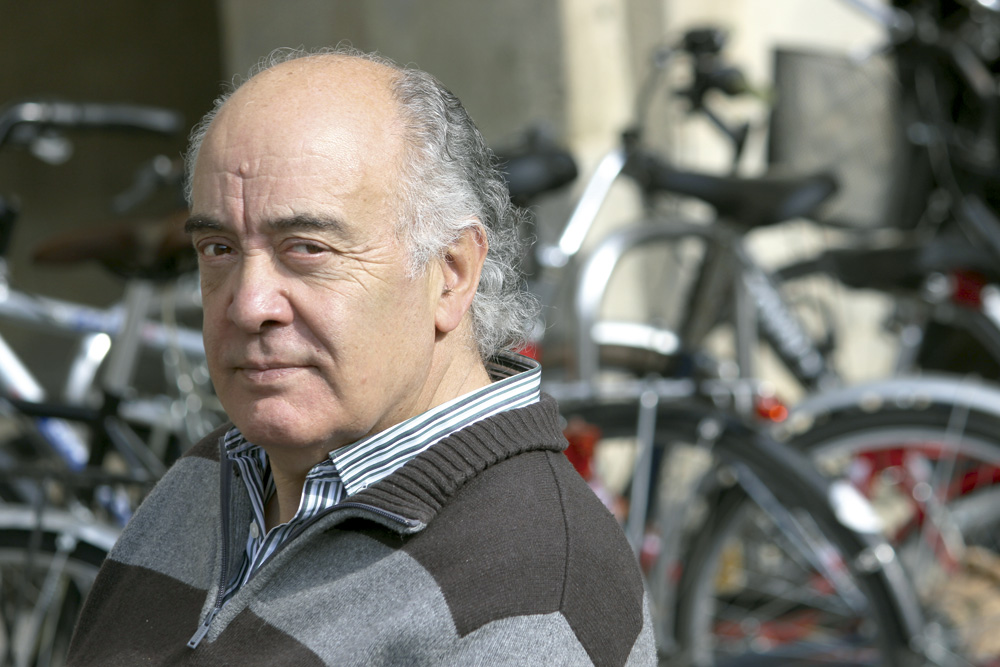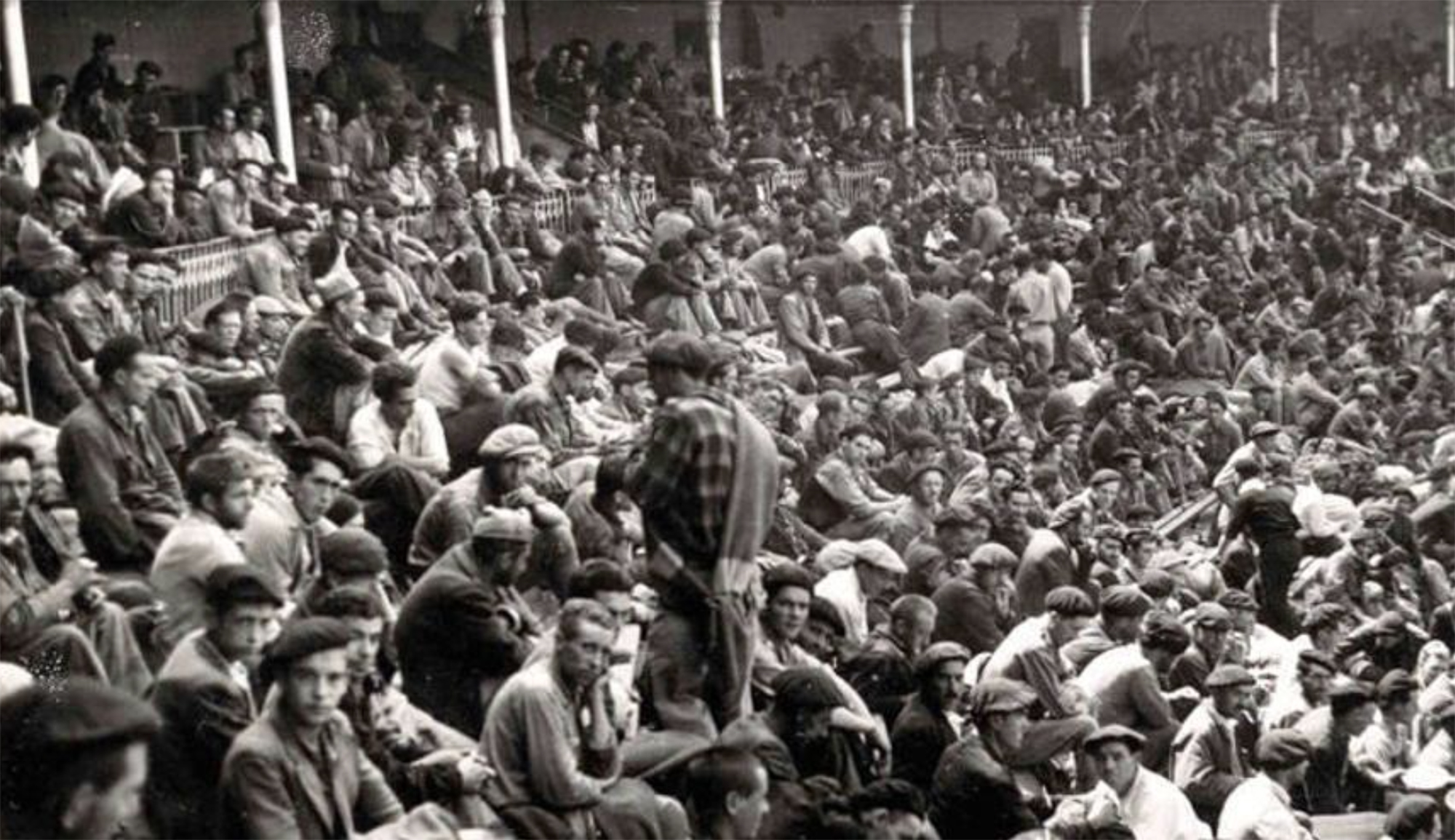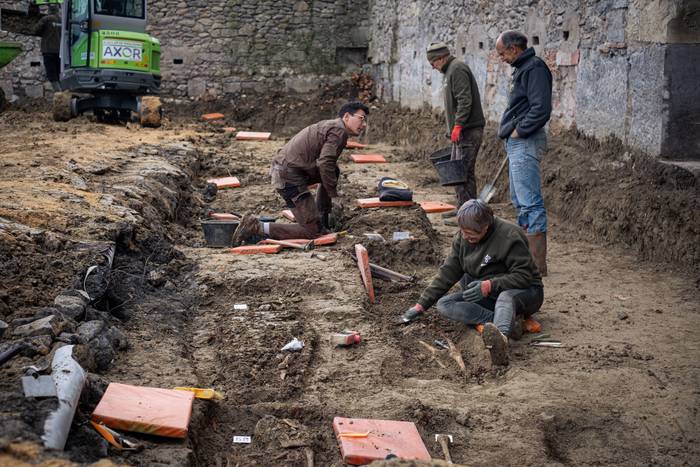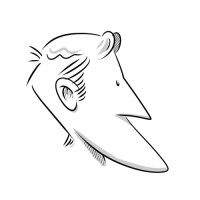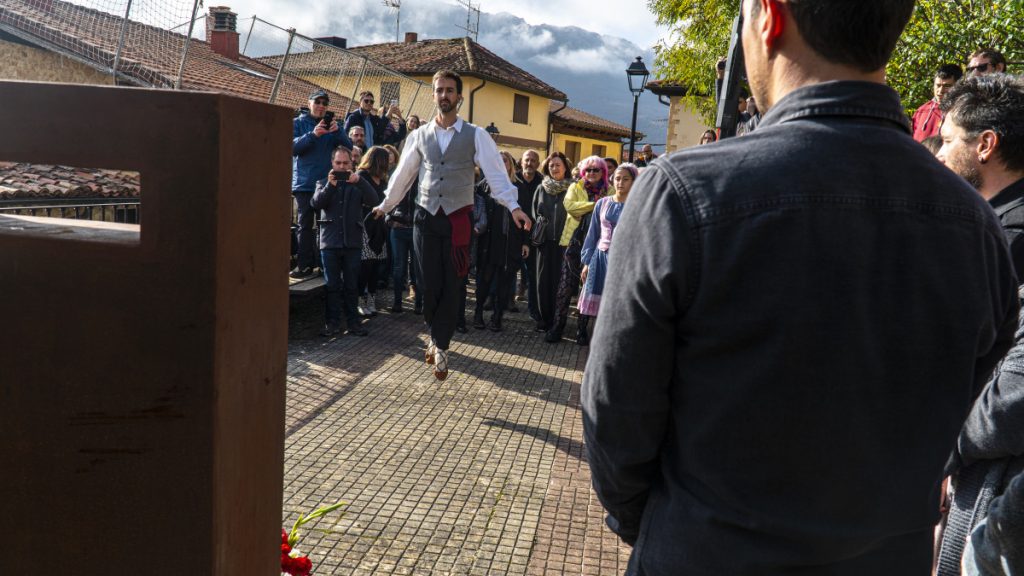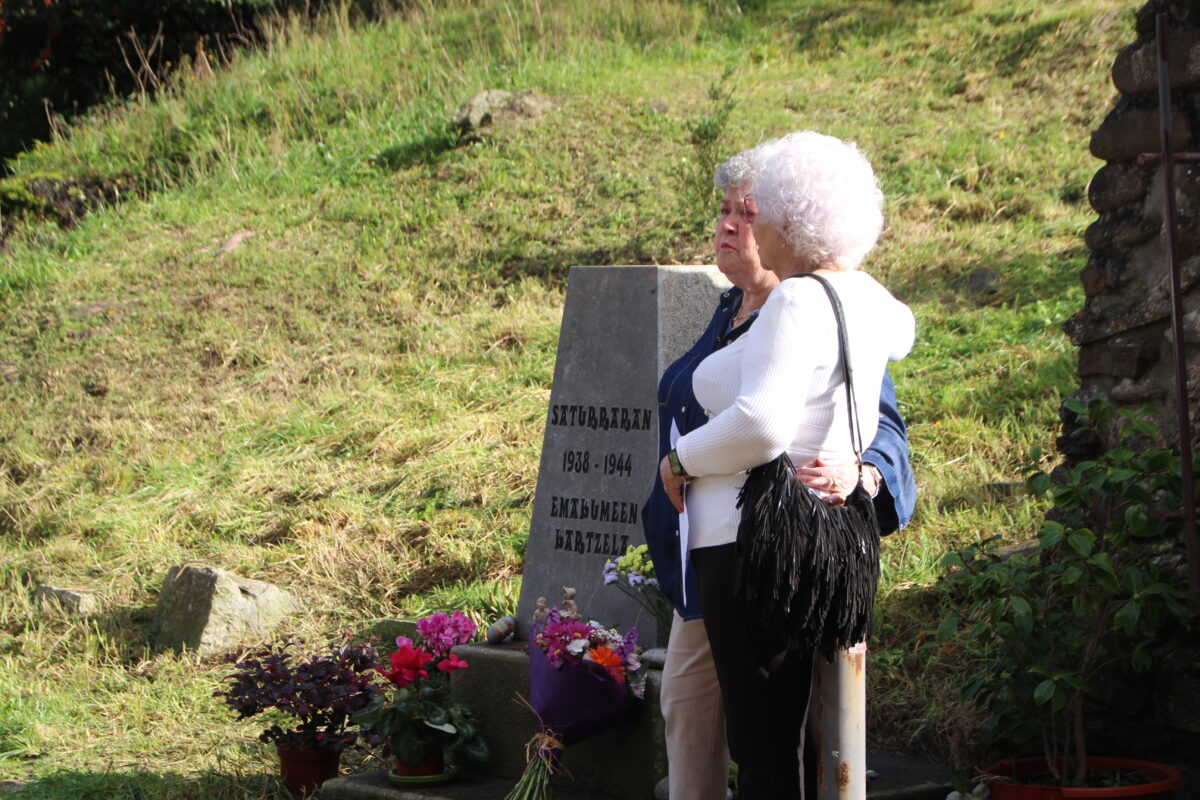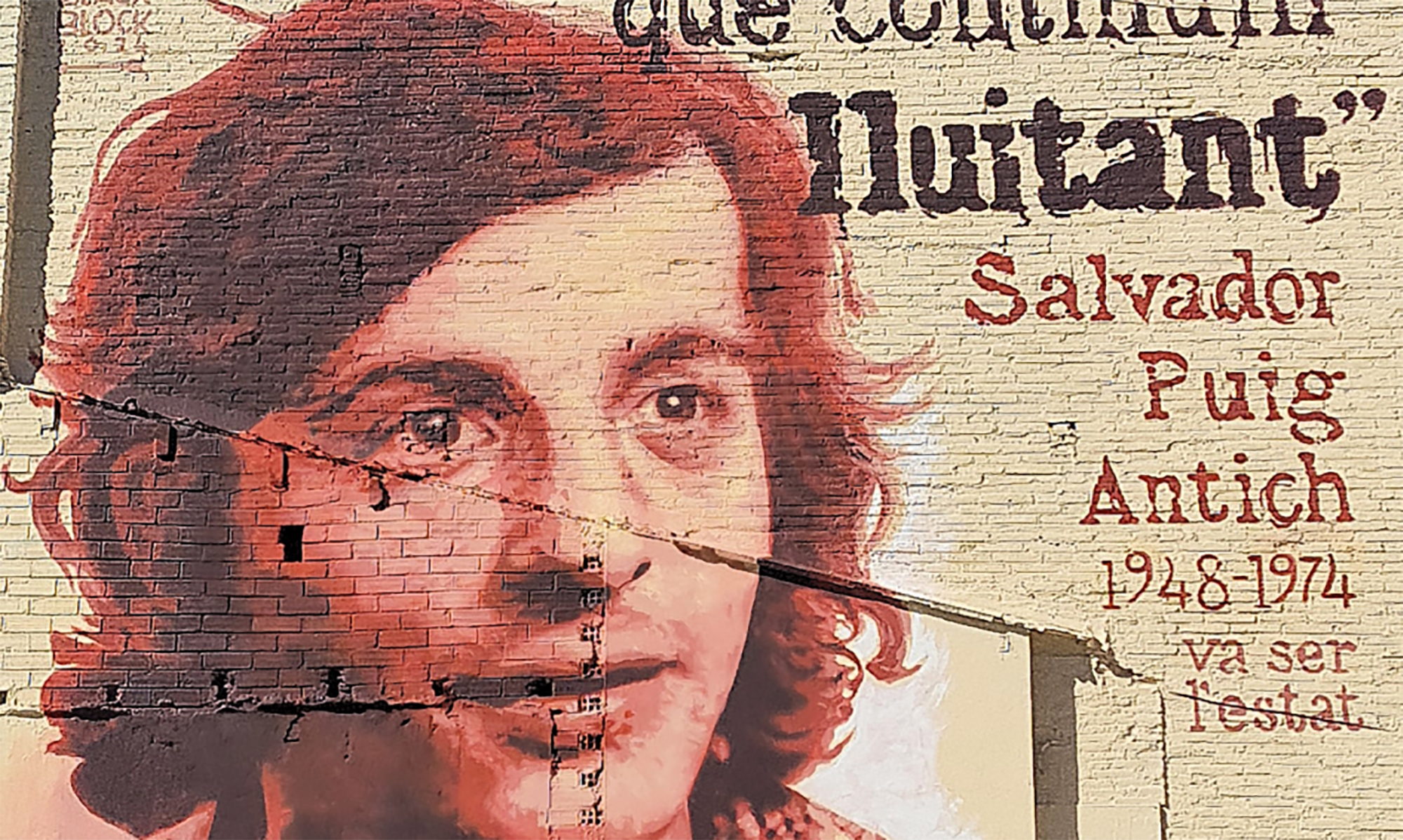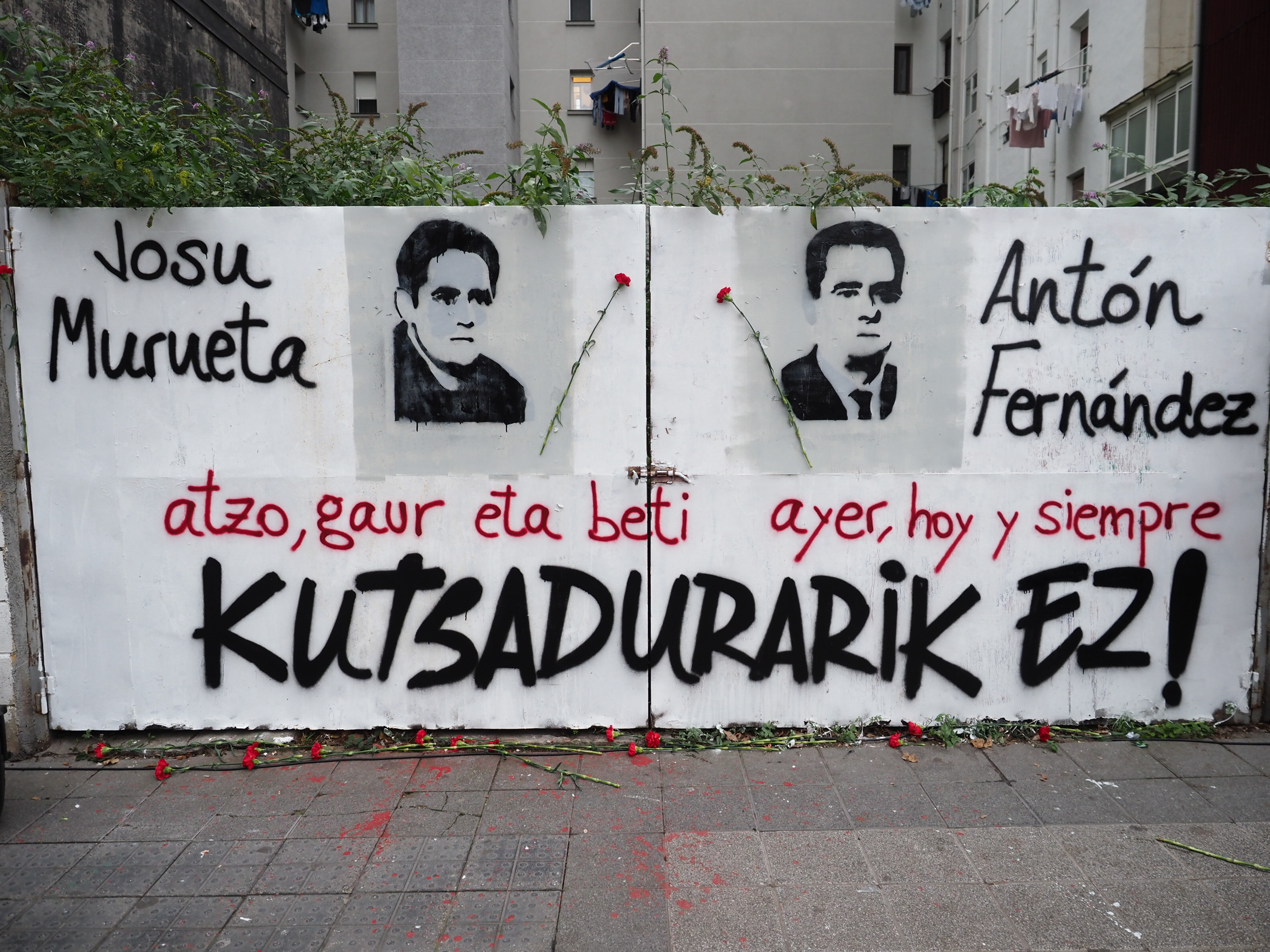"You can't be subjected to torture all your life."
- Martin Orbe had a friend, Eusebio Martija, who once asked him how he was and responded “OK, without going into detail.” Without going into details, the life of Martin Orbe: a priest independent of the hierarchy, a professor, tortured, who has been in the prison of Zamora, a member of the Indarra group, guide of the UEU… We have decided to go into details, unlike that friend of Orbe, Martija. How would you say that?
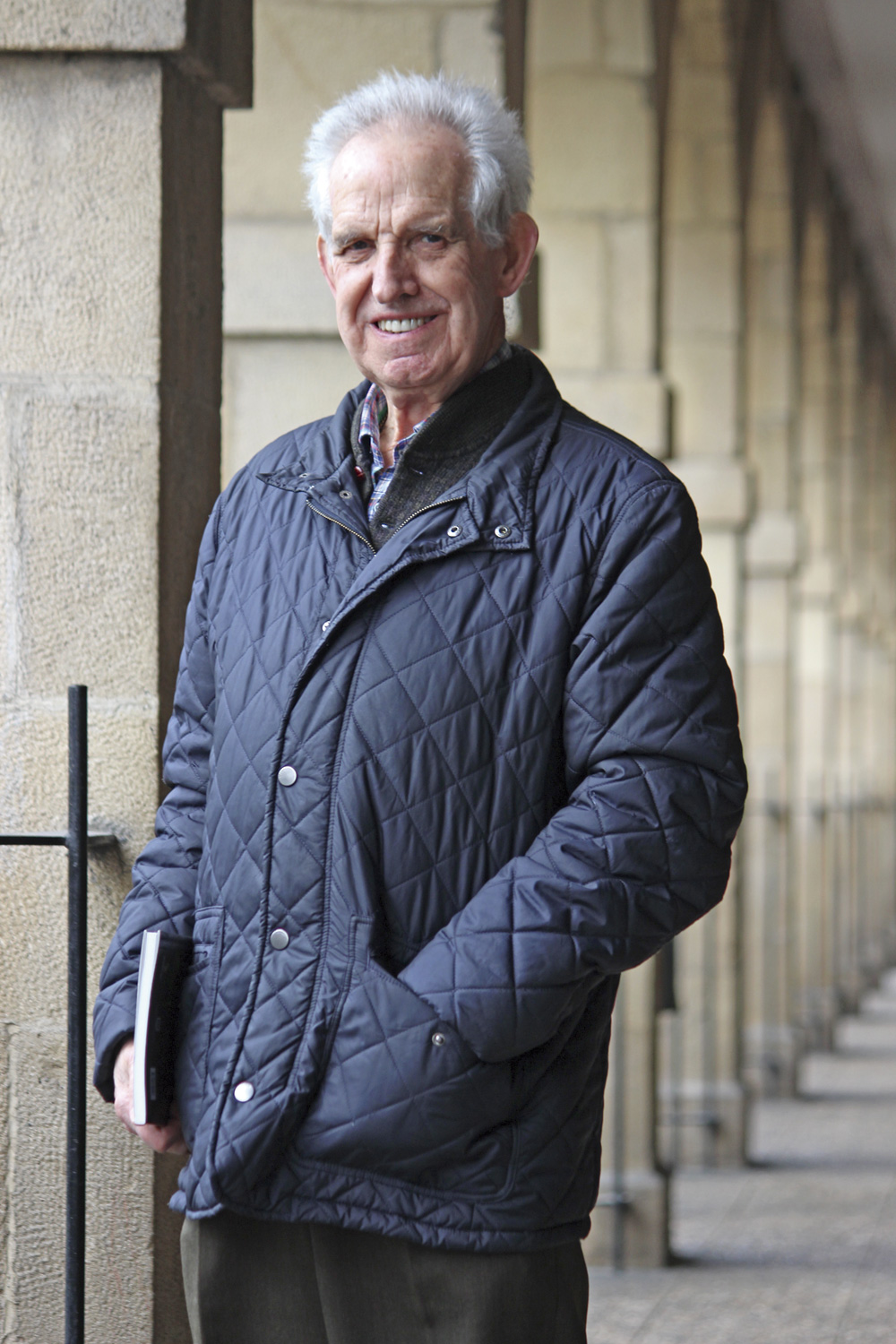
Abade Zeanurikoa, hogei urtez. Gogor taldekoa. Espainiako konkordatu kartzelan preso eduki zuten 1969tik 1972ra Zamoran. Gordin kontatuak ditu torturak Zamorako apaiz-kartzela (Txalaparta, 2011) eta Apaizak ere torturatuak (Intxorta 1937, 2017) liburuetan. Espetxetik irten eta, berriz atxilo hartu baino lehen, Ipar Euskal Herrira ihes egin zuen. Udako Euskal Unibertsitatea gidatu zuen 1976tik 1983ra. UEUren Merezimendu saria jaso zuen 2012an. Euskaltzain ohorezko ere bada. Abade irauten du.
You were ordained a priest in 1958. Two years later, in 1960, 339 Abades from Álava, Bizkaia, Gipuzkoa and Navarra wrote and sent a letter to the Spanish bishops, the Nuncio and the Vatican State Secretariat, denouncing the abuses of the Franco Regime.
You haven't seen my name there... I was in Zeanuri, when I was out. The bearers of the letter knew nothing but the cure in the village, a well-known, greater cure, Gabriel Manterola.
The uncle of Ander Manterola, head of the Labayru Institute. Gabriel Manterola, director and writer of the magazine in Basque Country Ekin, was exiled in England for ten years.
That is it! That was, of course, the main point of reference. He loved Gabriel a lot. He always reads a book, yes, but not a very practical man. He told me something, but no details. I, on the other hand, was at the Zeanuri School of Trades, quite tied in that regard. Julen Kaltzada was in Orozko... I didn't have a car, but I thought I would talk to Julen about it. Meanwhile, they published the signatures and I stayed there, without signing.
A new time came…
Environment I didn't know in the seminary. It was years of movement. There were a number of things. I was a young priest, I had to perform my ecclesiastical duties, and I was also a professor of the professional school of the people, in Zeanuri. I said it was a young cure, and the young priest is eager to work with the young. Shortly after being ordained priest began Herri Gaztedi. He came to Bizkaia from Gipuzkoa, with the hand of Valentin Zamora. He first contacted Ander Manterola. They organized a course in Bilbao and asked us to send the young people of the villages. I sent five men in category five. Herri Gaztedi was a real school for us. It gave us a new perspective to do our pastoral work. They taught us to work from the top down in the seminary, transmitting God's teaching up to the people below. Instead, Herri Gaztedi taught us a completely opposite path: “There we have society, there is the people – Euskal Herria, with their problems – from there, how to insert in that people the message of God?” So we learned in the church -- and in Herri Gaztedin -- that the molars were the most important. We had a great Herri Gaztedi lesson.
In 1964, the Catholic Church began the Second Council. Of course, that was what had driven your march.
How would you say that? Vatican II did nothing but ratify our path. I remember that a group of Herri Gaztedi was set up in Karrantza, and one of them said: “Once the farmer is placed as pope [John XXIII], and he has created a great salsa!”…
That same year Patxi Bilbao, abbot of Gamiz (Bizkaia), began to denounce that the municipal authorities threw the Spanish flag into the interior of the church.
Yes. Herri Gaztedi had a head – what we called the conciliator – and we also started to get together, to make assemblies. That was strengthened and that was how Derio's lockdown occurred in November 1968. We were ruined by 60 priests and I spent a month… Still, it wouldn’t be fair if I didn’t mention the work of the Zeanuri School of Trades, which helped me a lot. Three years after I went, they made me a school principal, and that's where the thing comes. Many of the students' problems were heard by the principal. A mother says: “Our son says he has done the test well, but he has been suspended.” Another says: “There’s a kid there, he wants to come, but he doesn’t have money to pay for school”… It’s not the same to relate to people – even if he has very good relationships – as a priest, as a teacher or as a worker.
What do you mean?
How would you say that? That there are always practical aspects of life. A mother comes to tell her son's problems and doesn't tell her three Avemariah to pray, right? And the work, the school work and the healing work are not the same: at seven o'clock in the morning I gave Mass, and at eight o'clock I was in school until noon. Two o'clock in the afternoon, back at school, until six o'clock. It is a very nice story of the Zeanuri School of Trades. It would be worth telling. I've written something about it. For me, the school was a great thing. It taught me life itself. If you're a vague cure, you can live without doing anything. If you feel kind, on the morning of Mass, you teach a little doctrine to the children, you will see some sick people, help some poor people a little… justify your work. But to a large extent, you do your own program. If you are linked to a need, to a job, that need links you, and to all that implies.
.jpg)
He said the years moved. In 1968, the first months of ETA. On 9 April 1969, Artekale fell. The detainee, for his part, has been wounded Mikel Etxeberria, who has managed to escape the police operation. He takes the taxi by telling Fermín Monasterio that he wants to go to Orozko. Then a dispute between the taxi driver and ETA member, and the death of a monastery. Then there are the arrests. Among them, you.
The young man hid in Orozko. They told his girlfriend that Miguel was injured in some way, and she asked me if I could do anything. Llodio's girlfriend went to Maite Idirin, and they both came together and went to the sacraments of the Arenal, where Paul, Mikel's uncle, was. But the sacramentine house was surrounded by civil guards, and the two girls told the taxi driver to go by. I knew Maite Idirin, I knew I was in school -- Zeanuri and Areatza were among them, and there's school -- and they came to me. They said that the boy was seriously injured, and as I was going to go to Bilbao, I told them that if it was necessary we would meet there. When we met in Bilbao, they were with the doctor [Josu Arenaza], who gave them the medications and then kept the Orozko Abades, in the holy place. Among them – most likely – the detainees at Artekale were named after Orozko’s trio, who gave the name of Mikel’s girlfriend, and he, mine. They came to find me.
Where did they stop you?
At school. Three secret police officers came from the social brigade, and I told them it was the diocese school, and I asked them if they had the bishop's permission to enter it. They told me they wanted to call. “Do you have a phone?” and I: “No.” Two minutes after I said it, the school phone rang. We had him in the workshop and then he played hard. But they kept quiet. Soon afterwards came the famous Servant. [Félix Criado Santos, Chief of Police of the Social Brigade of Bilbao, harsh torturing] Criado was not kidding. "What bishops and what bishops! Wives and guns!” By then, the students had already realized, and when the civil guards pulled me out, the students made the hallway, some crying. “You’ve achieved what you wanted!” a guard. I asked him: “No, I haven’t achieved what I wanted. I wanted to be here.” I was taken home, but I had nothing and from there to Indautxu.

It is then that the priestly jail of Zamora and the Priests are the horrors you have reported in the tortured books, which have been silent for many years.
They were silent, but don't forget. How would you say that? The experience of torture is very hard, we try to overcome it in the best possible way. So I was young, and although I always remembered torture, I don't forget what my father, hearing that I had been tortured, seemed to say: “Who are they to stick to my son?” You can't be under the weight of torture all your life. And on the other hand, in my life, I've had other experiences, positive. The School of Trades, the work then, the good friends, the UEU… All of that you live differently. Not everything has been torture.
He spent three years in Zamora, he also appears in the book of the prison of priests.
Yes. And I wanted to get out of there and go back to Zeanuri, for one reason. Franco still lived in firewood, and he wanted to teach him in front of the people that even if Franco lived and took firewood, we did not have to be afraid, that we had to go ahead. But I wouldn't say that from the pulpit. I wanted to go back to school, but there they already had another principal. Years later, the school guide, Luis Arrangi, told me that I had not been redirected, that I was marked from jail, and that that didn't benefit the school.
Not as a director, but he continued to work there.
Yes. Three years later, LAB was born. Kepa Leiza de Bedia came to me, asking me to throw pamphlets on the school copier. And the complicated history of Euskal Herria! Andoni Unzalu, now from the PSOE, came for those roles. I was waiting in a pine forest, in a small cottage. Before arriving in Bilbao, propaganda was passing through. I was coming in a little break. Sometimes he didn't carry propaganda. “Today I will not take you. I need more. For next week, do so much.” From time to time I didn't come to look for it and it's harder to smoke than to draw a thousand pamphlets. The adventures of our Andoni Unzalu.
“School work is not the same as cure work: a mother comes to tell her son’s problems and you won’t say three Avemaria to pray Mary, right?”
In 1972, you're a fugitive in the North.
Kepa Leiza was arrested and I noticed that the police were coming back. But I didn't intend to go back to jail. It was the beginning of the course, I was at the Professional School, and the cops came. I hid in a loft, stuck in my papers. “Here he must!” the police said, but those of the school did not, showing the teachers’ organization chart: “Today you don’t have to be here. He's not here." Then he took me out a professor in the car. I wanted to go to Cobreces (Santander, Spain), to the convent of the Cistercians, where we were Julen [Causeway] and I, but they told us they had no accommodation, and I went to Bien Aparecida [Ampuero, Santander], to the trinitarians. They welcomed me very well. I explained my situation to them, they voted and decided yes. I stayed there, hidden. One day they went to visit Algorta's trinitaries and, just in case, no one recognized me, I spent all day in my class. Every day I heard Radio Paris, and one day he said Franco was in the last. The Trinitarians also asked me what Radio Paris had said, and I, what I had heard, that Franco was at the end. One of them said: You want to kill Franco!
From there, yes, to the North…
Yes. My plan was over. They would take me to Pamplona, and from there, with the help of sacramentines, to the North. Then, he told me, I would just go to the other side, to Urepel. I don't even know where I went. I climbed the hill and found the way. And as I was speaking to Urepel, I found a pastor. “Are you also fleeing that evil Franco?” “Yes, yes.” And Maite Idirin, from Urepel, welcomed me. With them I made once, again in the house of the abbot of Zeberio Amadeo Rementeria, which had also escaped, in another house on the outskirts of San Juan de Luz… In the end there were Jon Idigoras and his wife. That's why, when Jon died, I made the mass of the dead. So the story!
Now yes, he has told the “details” of his friend Eusebio Martija…
Well, so ...
It was a bustling time. “Years moved,” as you said.
Xabier Amuriza has described the movement of this time in his works. That is why, although it does not serve to make comparisons, it seems to me that the young people of today do not have the flame that we had. People have escaped, we believe the institutions will do everything, and that is not the case. How would you say that? One day I met Bittor Kapanaga through Gontzal Mendibil. Bittor was a great and friendly man. I remember once I got out of jail and I was with him. There were already ETA VI, EMK, LKI… and this and that, and Bittor told me: “Where there is a good land, it sprouts out of everything: beautiful grass, grass, sasia, nettle… The disease does damage and we take it off. Also the scrublers… but the earth, there it stays. This is Euskal Herria, this land will bear fruit.” “Come on, Bittor, that’s it!” I told him…
Pamplona, 1939. At the beginning of the year, the bullring in the city was used as a concentration camp by the Francoists. It was officially capable of 3,000 prisoners of war, at a time when there was no front in Navarre, so those locked up there should be regarded as prisoners... [+]









